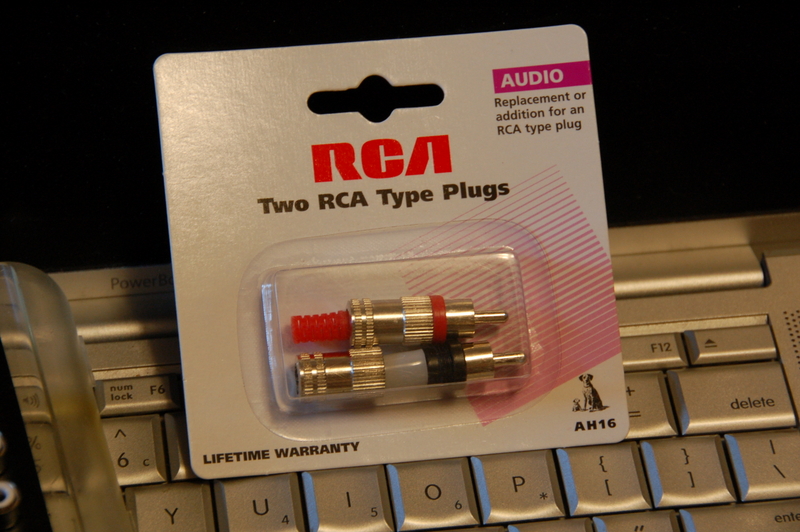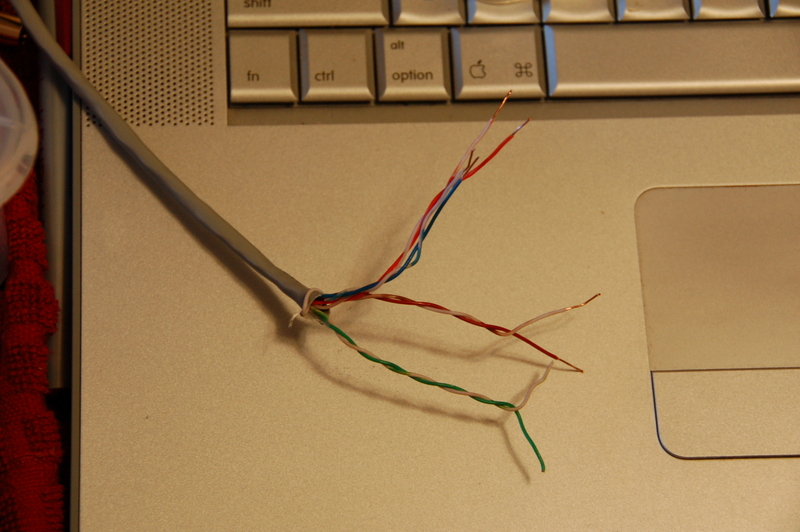when i needed to wire my stereo to my music server 60 feet away, i immediately thought of a forum post a couple months back, where a fellow used ethernet cable to produce cheap audio cable.
it made sense. cat5 ethernet cable appears relatively well shielded against noise-inducing radio waves: each of the 8 small wires in cat5 cable is insulated; all 8 of those insulated wires are further insulated with one big outer housing. in fact, i bet cat5 underwent a lot of testing to make sure that it was robust enough to outside interference to cleanly transmit hundreds of megabits of information per second. something tells me the voodoo priests who make audio cables don't construct tests of the same rigor as the computer engineers.
and more importantly, cat5 ethernet cable is dirt cheap. high end interconnect/speaker cable will run you $5 a foot. that means i'd have to pay $300 to wire my stereo to my music server. fat chance. on the other hand, cat5 can be bought at custom lengths from home depot @ 9 cents a foot. that's 50 times cheaper than the ritzy (and not necessarily better) cables.
it turns out to be super-easy to make audio cables from cat5 ethernet cable:
[1] procure ethernet cable (i suggest home depot - they're so cheap)
[2] procure appropriate plugs. if, like me, you're making interconnects for connecting things like sound cards to pre-amps, you'll probably need these rca plugs (sets you back a whole $3!):

3] use a sharp knife, or preferably, some wire cutters, to expose the ends of the cat5's individual cables:

4] perhaps the hardest part (which isn't that hard at all) comes up now. you need to pick which of the colored wires will go to your right plug and which will go to your left plug. make sure to keep track of the corresponding group wires for each colored wire. the ground wires should be white and clearly be wrapped around each colored wire.
5] attach two of the wires to the positive pin of each plug and a different pair of wires to the negative pin of each plug. it doesn't matter which color goes to the positive or negative pin, or even if you know which is the postive or negative pin of a plug. instead, all you need to do is be consistent - if on one end of your cable, the blue and green wires go to the ground pin of the red plug; well, on the other end of the wire, you should have an identical wiring configuration on the other red plug.
6] you should have something that looks like this:

plug 'em in and enjoy!








